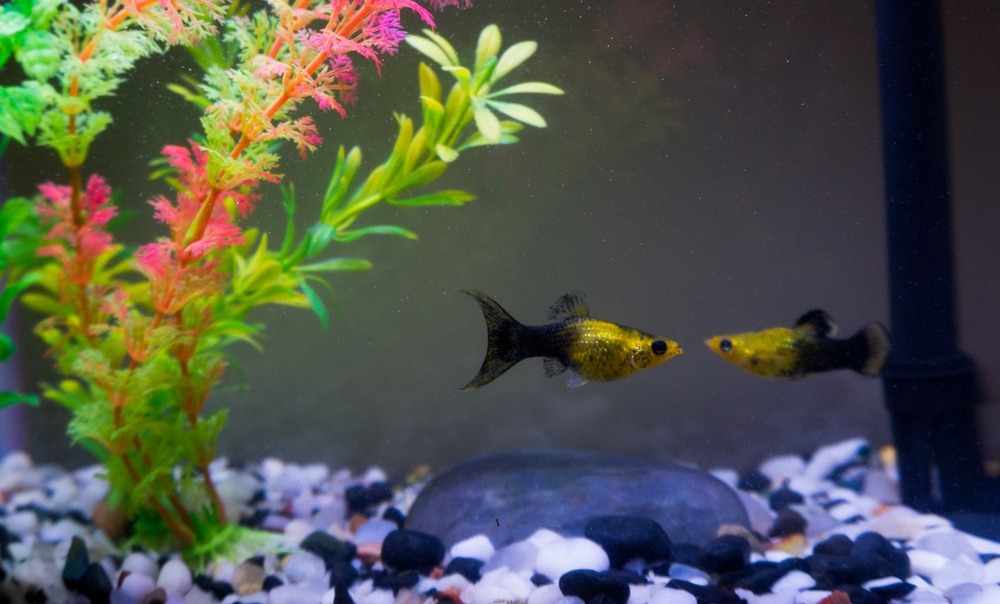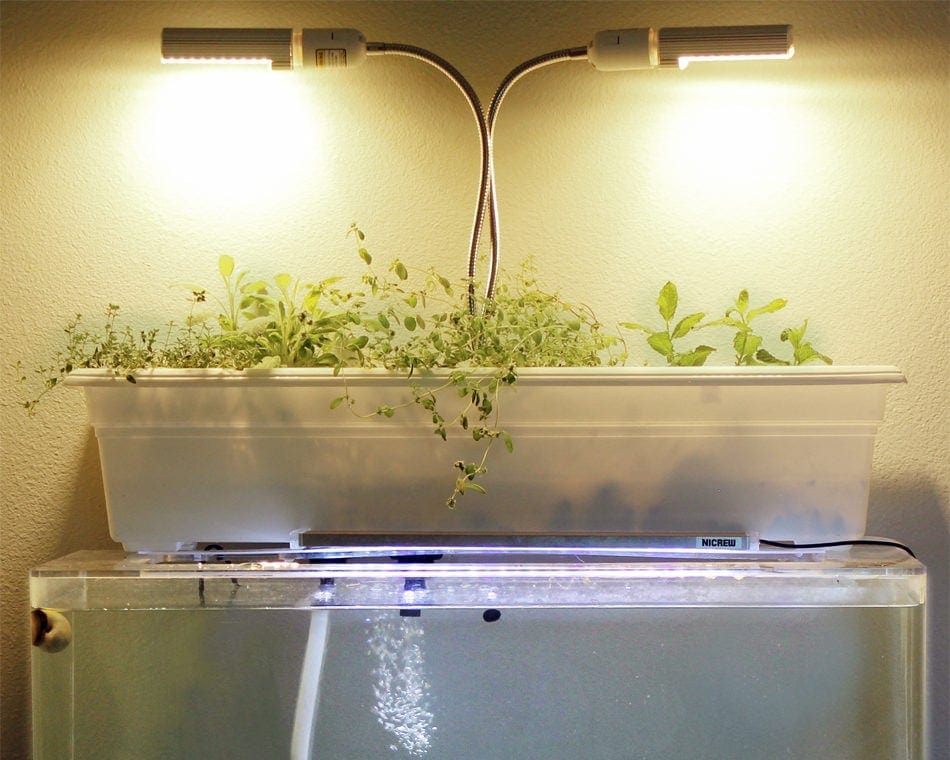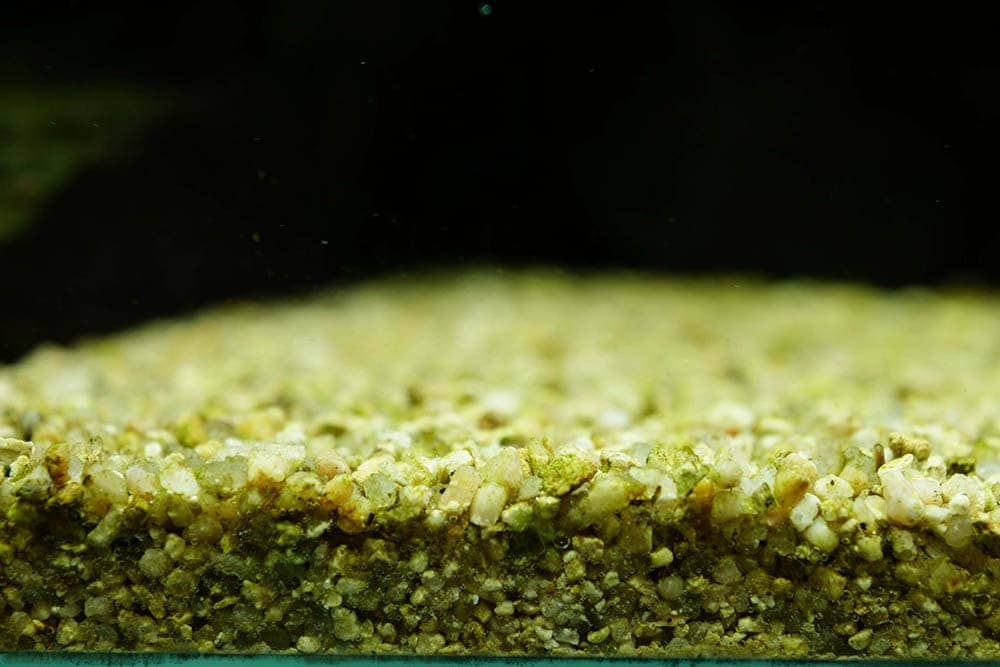12 Great Fish For 29 & 30 Gallon Tanks (With Pictures)

Updated on
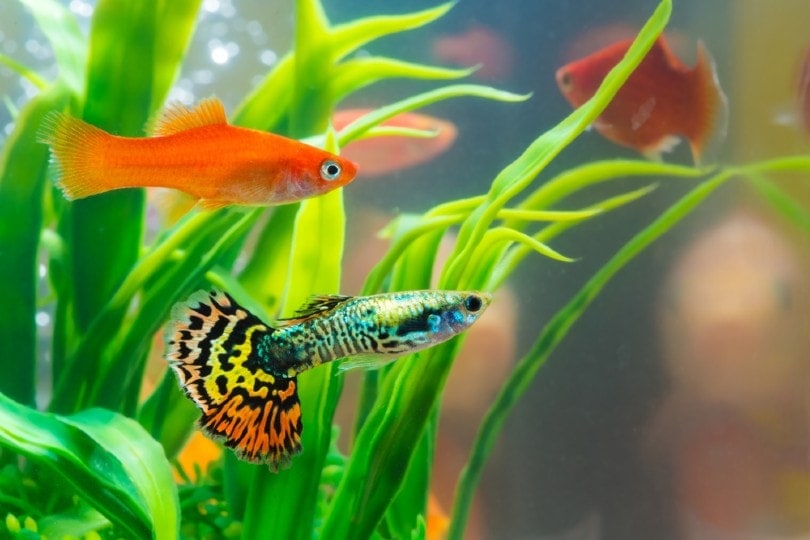
So, you have just gotten yourself a nice 30-gallon tank, or maybe you think that a 29- or 30-gallon tank is the ideal size for what you need and want. Once you have decided on the aquarium size, something you will need to figure out is which fish to put in there?
Of course, your tank size is going to determine the type(s) and number of fish that you can put in there.
How Many Fish Can I House in a 29–30 Gallon Tank?
If you are just getting into the world of aquariums, you probably want to start off fairly small. After all, you don’t want to invest in a massive tank, although, of course, 30 gallons is still quite sizeable. It’s a good size that doesn’t take up too much space yet is large enough to fit a good number of fish.
In terms of how much space your fish need, just keep in mind that most fish follow the 1 gallon per inch of fish rule. So, a 5-inch fish would require 5 gallons of water.
That said, active swimmers and territorial fish may benefit from having up to 2 gallons of tank space per inch of fish. As you can see, how many fish you can house in a 29- to 30-gallon tank all depends on the exact type of fish.
The 12 Fish That Are Great For 29–30 Gallon Tanks
Let’s take a look at some of the best fish that you can get for both 29- and 30-gallon tanks – ones that will fit comfortably.
1. Guppies
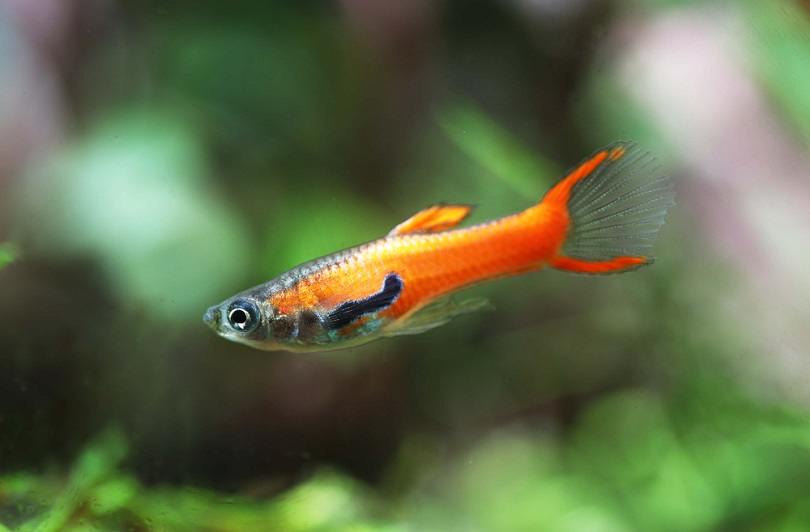
Guppies are small and peaceful fish that feature some very bright colors. These fish can grow up to 2 inches in length, and therefore, each guppy should have at least 2 gallons of tank space.
Following the 1 gallon per inch of fish rule, you could therefore fit up to 15 guppies in a 30-gallon tank, although you may want to give them a little more space to be comfortable.
These are very easy to care for fish that are not overly sensitive to water parameters and conditions, plus they aren’t picky eaters either. Guppies also make for some really peaceful tank mates that get along well with others.
2. Neon Tetras
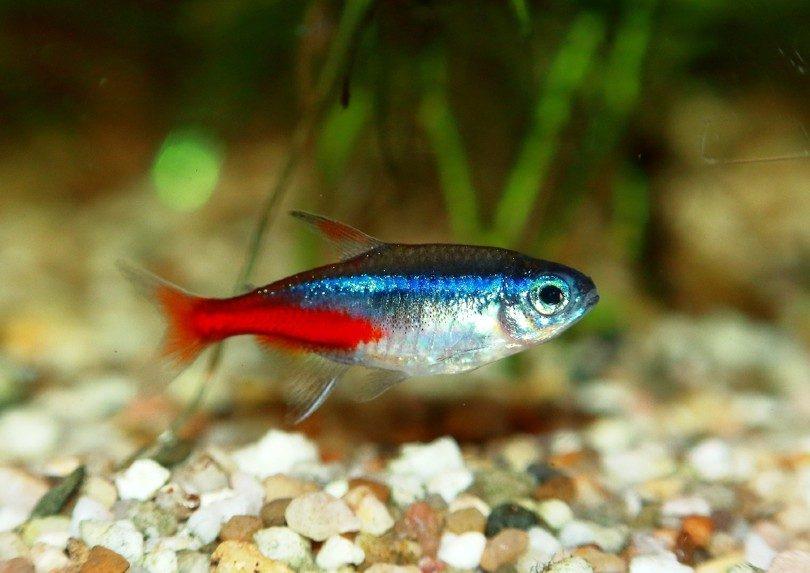
The neon tetra is another very small aquarium fish, one that will usually grow to around 1.5 inches in length. This means that each neon tetra should have roughly 1.5 gallons of tank space, or maybe 2 gallons per fish if you really want to make them feel at home.
This means that a 30-gallon tank could hold up to 20 neon tetras, which is great because these are schooling fish.
They spend all of their time in the school, they are peaceful, and they make for great community tank fish. These fish like heavily planted tanks with slightly acidic and soft water, complete with a fairly high temperature too. Overall, these are very low maintenance fish.
3. Platies

The platy is a beautiful fish that can come in a variety of colors, one that is a bit larger than both of the others we have looked at today.
Platies can grow to around 3 inches in size, and following the general rule, this means that each platy should have 3 gallons of tank size. Therefore, in a 30-gallon tank, you could fit up to 10 platies.
These fish like very warm waters, low currents, a lot of vegetation, and somewhat basic and hard water. They like eating a variety of insects, larvae, and veggies. These are also very low maintenance fish that are quite hardy and not overly prone to disease, plus they make for great aquarium tank mates too.
4. Cory Catfish

If you are looking for a fish that makes for a great community tank mate, a bottom dweller that keeps to itself and that likes to feed on debris in the aquarium, and one that looks cool too, then the cory catfish is a good option to consider.
These fish can grow to 2.5 inches in length, and seeing as each inch of fish needs about 1 gallon of tank space, each cory catfish needs 2.5 gallons of tank space. Therefore, a 30-gallon tank could hold 12 of these fish at most, although 10 is better.
What does need to be said about cory catfish is that they can be quite fragile when it comes to water parameters and tank conditions. Cory catfish require the water to be immaculately clean as they are fairly prone to illness.
5. Molly Fish
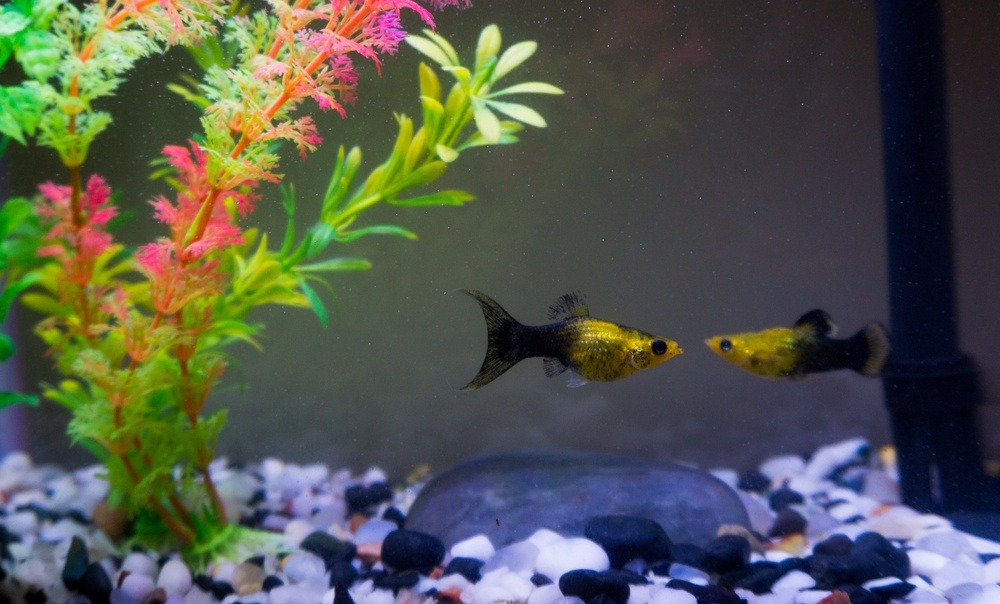
Mollies come in many different types, as there are roughly 40 of them, with the best of them have solid black, silver, or bright yellow bodies. Depending on the exact type of molly fish you get, it could grow to around 4.5 inches in size.
These are schooling fish and should be kept in groups of four or more. When it comes to their tank size, each molly will require 4.5 gallons of tank space at the very least, which means that you could fit up to six of them in a 30-gallon tank.
These are extremely peaceful fish that really don’t cause any problems in community tanks. They are low maintenance and can handle varying water temperatures, pH levels, and hardness levels, plus they are omnivores that are not picky in the least. As long as the water is clean, these fish will be fine.
6. Bristlenose Plecos
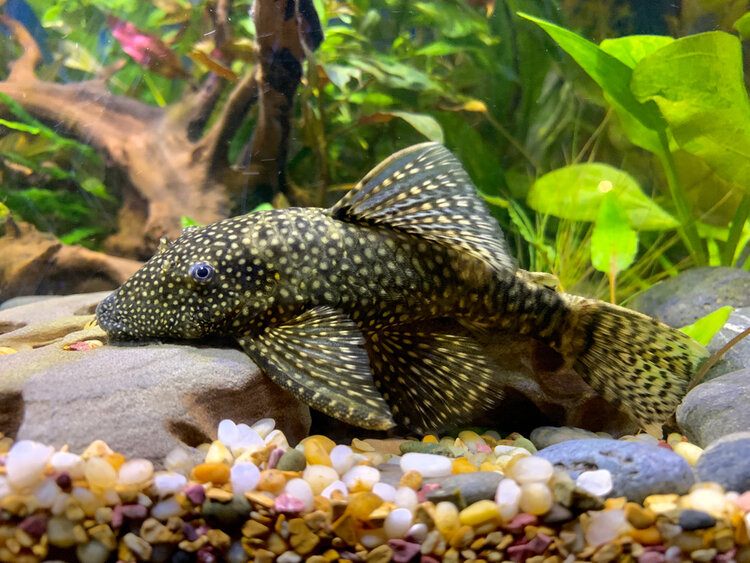
Here we have yet another great fish to house in a community tank, as it is very peaceful, is a bottom feeder, and prefers to keep to itself.
One of the reasons why many people get bristlenose plecos for their tanks is because they are scavengers that clean up all sorts of debris, plus they really enjoy eating algae too. They are not picky eaters in the least. These fish are also very low maintenance, as they can survive in a wide array of water temperatures, pH levels, and water hardness levels too.
Bristlenose plecos are fairly large fish that can grow up to 5 inches in length. Therefore, each of them needs at least 5 gallons of tank space. So, a 30-gallon tank could hold up to six at a time.
7. Cherry Barbs

Cherry barbs are very small fish that can grow up to 2 inches in length, although they often top out at as small as 1.5 inches in length. Therefore, you should provide each cherry barb with at least 2 gallons of tank space. And when it comes to 30-gallon tanks, this means that you could fit up to 15 of them.
This is ideal because cherry barbs are schooling fish that prefer to be kept in fairly large groups. The cherry barb is known as being one of the most peaceful aquarium fish around and they never cause trouble or problems with others.
These fish are also super beginner friendly as they are very hardy, not prone to disease, aren’t picky eaters, and can survive in a very wide range of water conditions. As long as the tank is moderately clean, cherry barbs will do just fine.
8. Rainbowfish
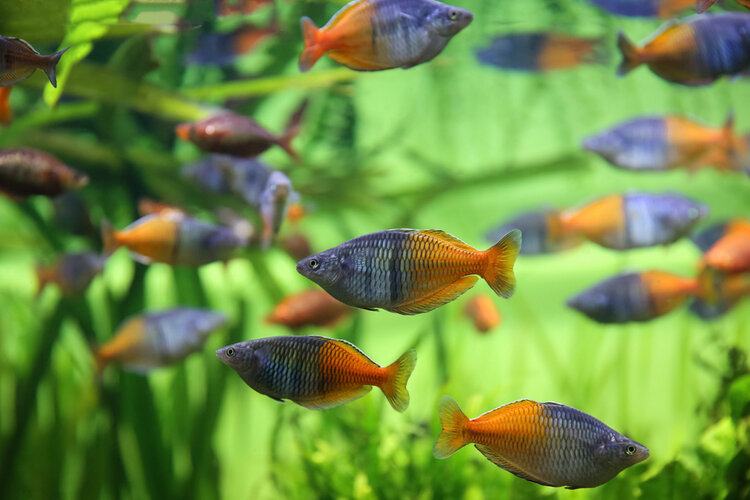
As you can probably tell by the name of it, the rainbowfish is super colorful, bright, and just downright beautiful, which is why so many people choose to put them in their tanks.
Now, you do have to be careful here, as when it comes to 30-gallon tanks, you do want to stick with the smaller types of rainbowfish since some types can get very large. They are schooling fish, so they cannot be kept alone.
The smallest type of rainbow fish will top out at around 4.4 inches in length, and based on the 1 gallon of water per inch of fish rule, this means that you could fit six of them in a 30-gallon tank, with six rainbowfish actually being the minimum recommended number to create a decent school.
One thing that does need to be noted here is that rainbowfish are hard to care for as they require very clean water, exact water parameters and conditions, and they can be picky eaters, too.
9. Goldfish

Although you might see people housing goldfish in small gallon bowls, this is actually not ideal or recommended at all. A fancy goldfish is going to require about 10 to 20 gallons of tank space on its own, whereas a common goldfish needs closer to 30 gallons.
Therefore, whether we are talking about a 29-gallon or 30-gallon tank, you will only be able to fit a single common goldfish, although you could technically squeeze in up to three fancy goldfish. Even the smaller fancy goldfish can reach up to 12 inches in length if properly cared for.
Besides their fairly large tank requirements, goldfish are not too hard to care for. Goldfish are not aggressive and do well in community tanks, although they should not be kept with small fish that can fit in their mouths, as they are likely to eat them.
10. Killifish

Killifish are fairly small and will usually top out at around 2 inches in length. They are fairly active swimmers, so they do like having a good deal of space. They are also schooling fish that like to be kept in groups.
Three killifish should have about 10 gallons of tank space, and when it comes to a 30-gallon tank, you could fit about 10 of them in there. Their small size makes it easy to keep fairly large numbers in a tank with limited space.
Generally speaking, killifish are quite peaceful, although they can be aggressive towards other male killifish, particularly during mating season.
One thing to note is that killifish do require fairly specific water parameters, especially in terms of the water temperature and pH, but they are still quite easy to care for in general.
11. Angelfish

The angelfish is known for being a fairly aggressive cichlid. They can make some trouble in tanks. Moreover, they grow to 6 inches long and 8 inches tall, making them quite large.
The absolute minimum tank size for the angelfish is 10 gallons, with most recommending 15 or even 20 gallons per fish. This is because they are aggressive, territorial, and fairly active swimmers. If you want to keep a pair of angelfish together, you will need a tank of at least 30 gallons in size.
Although they are not overly peaceful, they are not hard to care for. They are not very picky eaters and they can easily survive in a wide range of water conditions and parameters. Just keep in mind that an angelfish will eat any and every other fish that is small enough to fit in its mouth.
12. Kuhli Loach
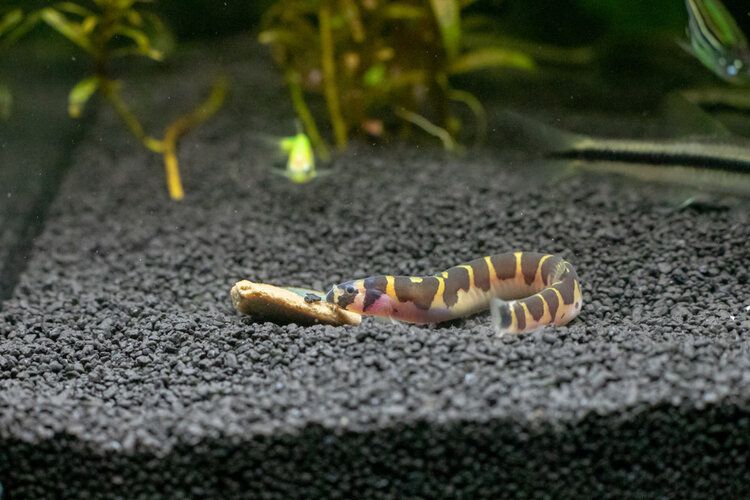
If you want to get some bottom feeders that are going to help keep your tank clean, the kuhli loach is a good option to keep in mind. This fish will grow to about 2.75 inches in length, they like to explore, and they like to be kept in groups of at least four or five.
If you don’t keep them in groups, they are likely to hide away most of the time. Most would recommend putting no more than three kuhli loaches in a 10-gallon tank, so in a 30-gallon tank, you could fit up to nine or maybe 10 of them.
These fish are extremely peaceful and they don’t cause problems in community tanks. Moreover, just keep in mind that they need fairly warm water that is soft and quite acidic, with a good amount of lighting thrown into the mix.
29- and 30-Gallon Tank Stocking Ideas
Here we quickly want to provide you with some examples of tank stocking combinations that you can go with for your 30-gallon tank.
- 3 killifish + 2 bristlenose plecos + 5 cherry barbs.
- 10 neon tetras + 7 guppies.
- 6 kuhli loaches + 5 cherry barbs.
- 4 Molly fish + 8 neon tetras.
- 3 bristlenose plecos + 4 mollies.
- 4 cory catfish + 3 killifish + 6 neon tetras.
- 5 cherry barbs + 7 neon tetras + 2 bristlenose plecos
What’s the Best Single Fish for 29-Gallon Tanks?
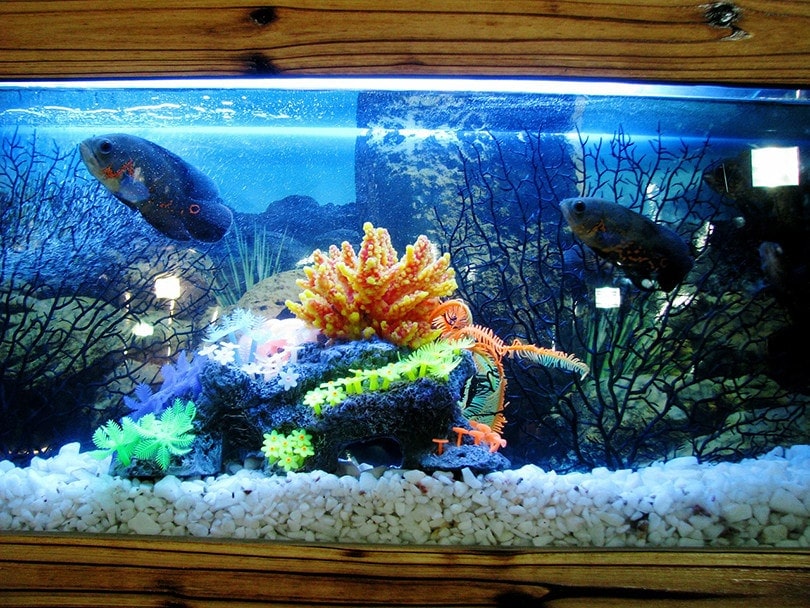
Many people would consider the angelfish to be one of the best single fish choices for 29-gallon tanks.
The angelfish is technically a cichlid, and they can grow up to 6 inches in length and 8 inches tall. Cichlids, like angelfish, can be quite aggressive towards other fish, so they do need lots of tank space. Most people would recommend providing at least 10 or 15 gallons for a single angelfish, with some saying that even more space is required.
Keep in mind that they do like having a lot of space and also prefer tall tanks. Other good single fish for 29-gallon tanks include pearl gouramis and swordtails.
What’s the Ideal Schooling Fish for 29-Gallon Tanks?
We would say that the ideal schooling fish for a 29-gallon tank would be the neon tetra. There are actually many different types of tetra fish out there, with the neon variety being one of the most popular.
As noted before, these fish usually grow to around 1.5 inches in length, with some other types of tetras being slightly larger or smaller, but usually never over 2 inches long. Neon tetras make for ideal schooling fish for 29-gallon tanks because you could fit up to 19 or 20 of them in there. Plus, they are very peaceful, fairly hardy, and pretty low maintenance too. And let’s not forget the fact that a school of fast swimming and super colorful neon tetras looks amazing as well!
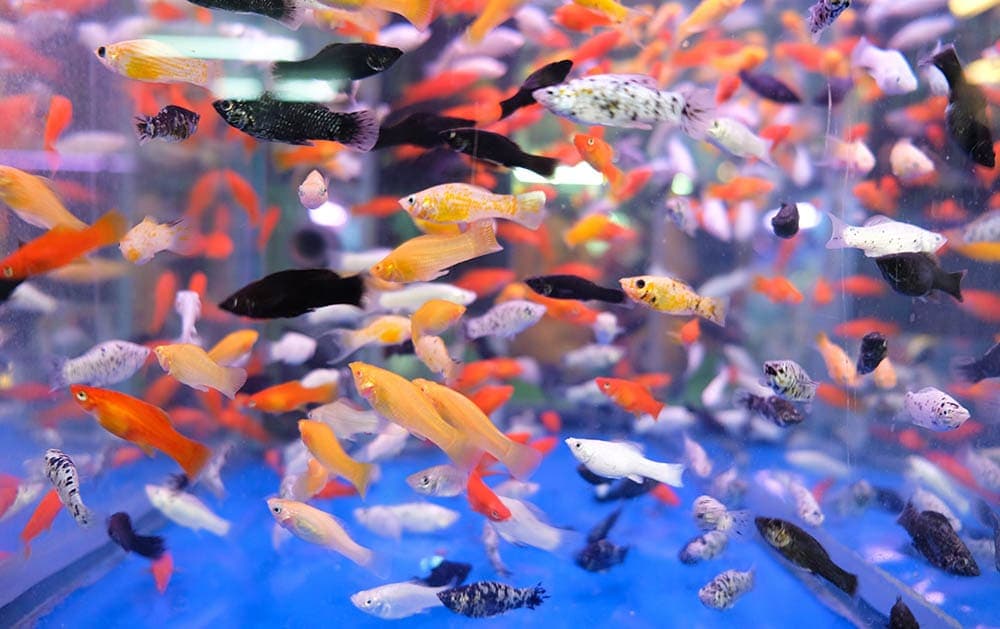
Best Bottom Feeders for 30 Gallon-Tank
There are quite a few bottom feeding fish out there that are ideal for 30-gallon tanks, so let’s take a quick look at some of the best ones.
- Kuhli loach
- Zebra loach
- Bristlenose pleco
- Cory catfish
- Otocinclus catfish
- Twig catfish
- Siamese algae eater
- Shrimp
- Snails
- Crayfish
- Bumblebee goby
- Yoyo loach
Conclusion
When it comes down to it, something that you need to realize here is that although 30 gallons may sound like a whole lot, it’s actually not that large. If you look closely at a 29- or 30-gallon tank, it doesn’t look all that big.
In terms of keeping fish in a tank of this size, you do have to be quite selective and thoughtful, as that limited space will fill up quickly. Choose wisely because the happiness of the aquarium’s inhabitants depends on it!
You Might Also Be Interested In:
Featured Image Credit: Tony Stock, Shutterstock



